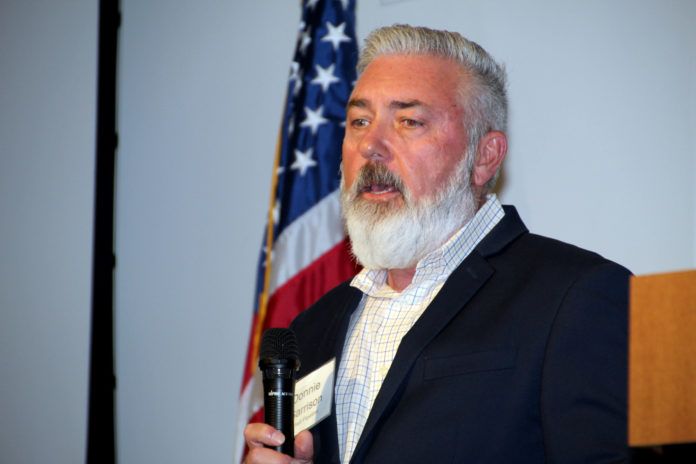Shell Pipeline’s Donnie Garrison touts a proactive approach to protecting the Louisiana’s thousands of miles of offshore pipeline. Taking an early role in re-creating and sustaining the state’s coastal marshes, he says, could lead to big savings in the long run as it significantly reduces erosion and eliminates the costly exposure of pipelines.
“A sustainable marsh provides the protection and support for our oil and gas pipelines, in turn protecting the infrastructure that provides the revenue to support our community and economy,” says Garrison, Shell Pipeline’s offshore operations support supervisor. He spoke at the Bayou Industrial Group luncheon in Thibodaux earlier this month.
In his role, Garrison supports Shell’s 2,500 miles in pipeline assets along the Gulf Coast by developing partnerships with landowners, conservation groups, contractors, and local and state agencies to facilitate infrastructure protection projects. Shell also develops new marsh through the cooperative engagement of the oil and gas industry in coastal sustainability planning. “This is important to oil and gas, as well as all of us who live along the Gulf Coast, because coastal erosion affects our pipeline systems,” he adds.
In a pilot project, Shell Pipeline partnered with CH2M for the first natural infrastructure project at Ship Shoal Pipeline, a 31-mile pipeline that delivers 200,000 barrels of crude oil a day to Louisiana from deep-water assets in the Gulf of Mexico. A portion of the pipeline runs along the Blue Hammock Bayou on the Louisiana coast where, due to natural erosive forces, it faced many challenges.
“The issues of a changing landscape facing Ship Shoal Pipeline range from integrity to maintenance costs, as well as increasing marine traffic raising the potential for incidents along the pipeline right-of-way,” Garrison says. Shell initially collaborated with The Nature Conservancy to consider and design non-traditional approaches that would benefit the infrastructure as well as the coastal ecosystem. CH2M was brought on board, and what began as a notion to protect pipelines turned into a long-term, sustainable and visually appealing solution.
During the project, the team designed and installed vegetation and sediment-filled erosion baskets, among other things. The natural infrastructure performed beyond expectations, with strong plant growth and accumulation—rather than erosion—of sediments. The sustainable solution is protective of the pipeline, has helped stabilize the marsh, and has enhanced the natural habitat. The site is now a resilient and thriving ecological asset.
The Blue Hammock Bayou natural infrastructure project, Garrison says, has become a model for balancing coastal infrastructure integrity and an evolving natural environment.



